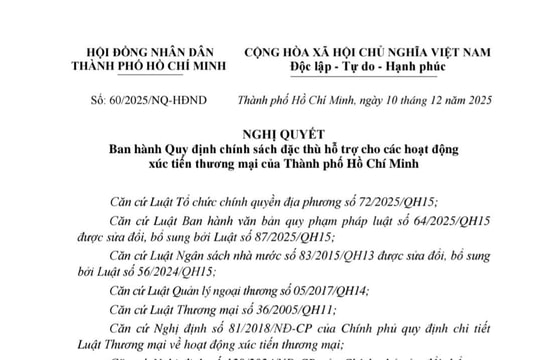
COMMITMENTS ON LOGISTICS INSIDE EVFTA
In EVFTA, there are no specific commitments for logistics, but there has commitment sections on different areas and sub-areas that can be logistics, based on the understanding of the United Nation and/or Vietnam. In the scope of agreement, some logistics types that Vietnam commits in the EVFTA are comprehensively the same with WTO, only opening two types of services in airfreight, 2 supporting services for all traffic vehicles and no domestic waterway transport services.
In EVFTA, EU commited to open logistics services for Vietnam, including 2 groups of contents mentioned in Chapter 8 and the annexes 8-B and 8-C: General responsibilities applying for all investment activities and trans-boundary service supplies including logistics services; Specific responsibilities applying for investment activities and trans-boundary services in transport by sea. In EVFTA, similar to WTO, Vietnam skipped the domestic sea transport out of scope of commitment in general sea transport, just keep the domestic market of sea transport for Vietnam’s ship firms and enterprises. However, in Chapter 8 (Section 8.49), Vietnam commits to allow EU international shipping lines to distribute blank containers (with the conditions that these containers shall not to be shipped like the cargo fee type and must be used for cargo treatments purpose of the ship firms) between Quy Nhon and Cai Mep – Thi Vai ports. After 5 years, the limits among ports has been removed but it still sticks with the condition that consolidating ships (mother ships) have to dock in Vietnam’s sea ports; In addition, it permits the EU international ship supplier to supply cargo consolidating services by vessels between Quy Nhon and Cai Mep – Thi Vai sea ports.
Hence, in EVFTA, Vietnam allows EU sea transport service provider to provide cross-border services to Vietnamese customers without limitation (including passenger transport). Compared to the condition that only allows to provide the international shipping services through the border in WTO commitments, this is a significant opening level of Vietnam in EVFTA.
For EVFTA, Vietnam assurances to open the door for 4 groups of sea transport supporting services, including: maritime agency services, custom clearances, container warehouses and container loading and unloading jobs. Regarding to commitment level, compared to WTO, in EVFTA, Vietnam has one commitment with a new service that is maritime agencies, confirming to open wider with container warehousing services.
To maritime agency services: Vietnam allows the cross-border supplying services without any limitations, but only permit the establishment of joint ventures in Vietnam with the foreign capital not exceeding 49%. For foreign staff, Vietnam also confirms to allow the EU managers to work in maritime agencies.
Specifically for container warehousing services, Vietnam will leave the door fully opened, instead of limiting some forms of cross-border service supplying like in WTO. However, several specialists indicated that adding this service into EVFTA does not have much meaningful.
LOGISTICS – VIETNAM’S IMPORT AND EXPORT OF VIETNAM CAN HAVE BENEFITS FROM EVFTA?
One of the issues interfering the development of logistics and sea transport services is the slow development of sea-port infrastructure, domestic road and railway; a rough status of loading equipment, improper designs of sea ports for loading and unloading cargoes of specialized ships; no maritime services connecting directly with sea ports in Europe and US, the weak technological infrastructure, the low level of containerization, that lead to the high logistics costs in Vietnam.
However, about developed potential, Vietnam logistics market is evaluated to be expanded, through EVFTA for logistics, the volume of cargos transporting through regions is expected to increase 16- 18% per year on average; the import-export turnover of goods will be boosted; Vietnam joins in 16 free trade agreements with over 60 trade partners etc... and confirms to open door for logistics services for an increase of import-export activities, contributing to the expanding logistics industry, including sea transport.
Especially, EU is the big trade and strong in logistics. Only in sea transport, they have many big and modern vessel teams that take a large portion of the world sea transport trade, thus Vietnam’s sea transport will face a lot of difficulties due to the mostly unequal competition.
Vietnam’s transport enterprises just take a small portion in the world logistics picture due to the limitation in competitive capacity, but it still take a big percentage in domestic shipping. With the opportunities brought by EVFTA in logistics, increasing business efficiency from the administrative reform in customs, etc. will partly improve import-export process, as well as transport and logistics activities. Transportation plays the main role, taking about 60%, in logistics activities in Vietnam. If compared to the world, this rate is quite high. For sea transport, up to 90% of import-exported cargoes of Vietnam was shipped by this way, hence the commitments in logistics and sea transport in EVFTA has very important meaning. The expansion of these commitments is an opportunity to level up the market size, import-export turnover between Vietnam and EU might raise about 20% in 2020 and continue increasing up to 42.7% in 2025, according to Ministry of Investment and Planning.
On the opposite side, when EU’s products are exported to Vietnam, they will be cleared the taxes since the trade agreement approved (the tax flow on machines imported from EU into Vietnam will sharply increase after EVFTA: 61% of tax on machines and equipment, 71% of tax on medicines and 70% of tax on chemicals etc.). When import-export activities between two sides become very active, then logistics services shall develop strongly.
With enterprises, it is a chance to reduce business operation fees and outsources. All Vietnam’s commitments to clear the taxes applying on EU transport vehicles, machines and technological equipment serving logistics will be an opportunity for logistics enterprises to buy products providing for manufactories with more reasonable prices, increasing technological capacity and reducing outsourcing costs. In addition, it will be an opportunity to approach to the logistics markets of EU member countries when they open various logistics service group for Vietnam’s logistics providers.
WHAT THE LOGISTICS ENTERPRISES SHOULD PREPARE?
To welcome the opportunities to develop logistics and sea transport, logistics enterprises should well understand all commitments opening for logistics services in order to identify new risks in competition with the EU partners in Vietnam’s logistics market or various opportunities with EU partners to have a better preparation plan. More importantly, all enterprises need to improve and promote an use of information technologies in the global logistics network, search for proper channels to increase the network with different logistics companies like ship firms, commercial and insurance agencies.
In terms of Logistics enterprise Association, it is necessary to promote logistics companies through raising the enterprises’ awareness about EVFTA benefits and provide guidelines on legal frame for them to take advantages of this free trade agreement.



.png)




.png)

.png)



.png)
.png)
